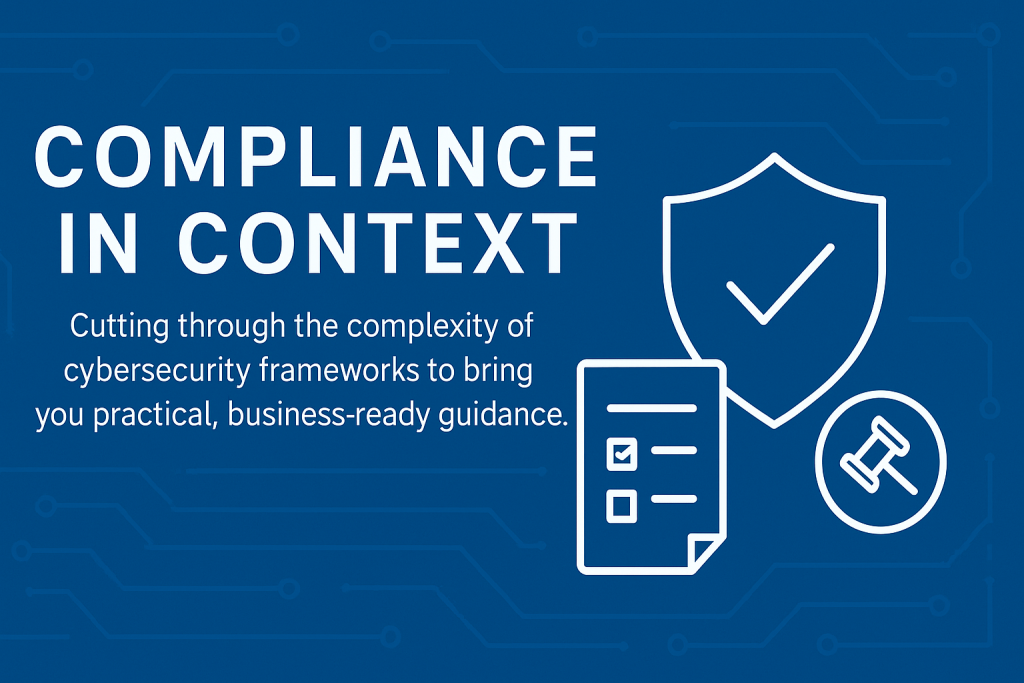Each month, we break down one control, policy, or requirement, from cybersecurity standards like CIS, NIST, or CMMC, and explain what it means, why it matters, and how your business can apply it in the real world.
What is Asset Inventory?
Asset inventory is the process of identifying, cataloging, and maintaining an up-to-date record of all hardware, software, and cloud-based assets that your organization uses. This includes everything from servers and workstations to mobile devices, cloud services, applications, and even IoT devices. A complete and accurate inventory is foundational to any cybersecurity or compliance program.
Where Is This Control Found in Cybersecurity Frameworks?
You’ll find asset inventory referenced in virtually every major cybersecurity framework and regulation. Here are a few key mappings:
- NIST SP 800-171
- CIS Critical Security Controls (v8)
- PCI DSS v4.0
- Requirement 2.4: Maintain an inventory of system components that are in scope for PCI DSS.
- ISO/IEC 27001 / 27002
- 27001 A.5.9: Inventory of assets
- 27002 5.9: Ensures responsibility is assigned for assets.
- HIPAA Security Rule
- 45 CFR § 164.310(d)(1): Device and media controls (includes accountability and tracking).
- State Regulations
- Massachusetts 201 CMR 17.00: Requires inventorying all records containing personal information.
- California Consumer Privacy Act (CCPA) / CPRA: Implies inventorying personal data and systems it touches.
Why Asset Inventory Matters for SMBs
Small and mid-sized businesses are often surprised by how many devices and software systems they rely on daily—many of which may never have been formally documented. Without a clear understanding of what assets you own, it’s impossible to:
- Identify vulnerabilities (e.g., outdated software or unpatched firmware)
- Respond quickly to incidents (e.g., “What systems were affected?”)
- Apply effective access controls (e.g., removing access from terminated employees)
- Meet compliance requirements and pass audits
Most ransomware and data breaches exploit unknown, unmanaged, or out-of-date systems. A solid asset inventory makes it far easier to manage risk proactively.
How to Implement Asset Inventory in an SMB
DIY Route – For Smaller Environments (1–20 Devices):
- Start with a Spreadsheet:
Create a simple table with columns like Device Name, User, OS Version, Serial Number, IP Address, Location, and Role. - Add Software Assets:
Record the key business-critical software and cloud services (e.g., Microsoft 365, QuickBooks Online, CRM systems). - Use Built-In Tools:
- Windows:
System InformationorPowerShellto gather system details. - macOS: System Report
- Install a lightweight agent (e.g., Spiceworks Inventory) to automatically collect data.
- Windows:
- Keep It Updated:
Set a monthly or quarterly reminder to review and update the list—especially after onboarding or offboarding.
Pro Route – When You Have Growth or Complexity:
If your organization has more than a handful of endpoints, remote workers, or multiple software environments, a manual approach quickly becomes unmanageable. Here’s what to look for:
- Use an RMM (Remote Monitoring & Management) Tool:
Platforms like NinjaOne, Atera, or ConnectWise can continuously scan and report on your IT assets. - Consider ITAM Solutions:
For broader environments, look into IT Asset Management (ITAM) platforms that integrate with ticketing, CMDBs, and cloud usage. - Hire a Trusted MSP or IT Partner:
If you don't have internal IT staff, a managed service provider like Clocktower can implement and maintain asset inventories as part of a broader cybersecurity program.
Bottom Line:
If you don't know what you have, you can't protect it. Asset inventory is the first step in cybersecurity compliance and it's the map that shows you where to go next. Whether you're using a spreadsheet or an automated toolset, investing time into building and maintaining your inventory will pay dividends when it comes to security, support, and peace of mind.
What do you want to do next?
I'm not happy with my current IT service provider. I'd like to investigate alternatives.
Clocktower Technology Services offers several levels of security-first, managed IT services designed to meet you where you are and get you where you need to be. Schedule a call to discuss your specific needs.
I don't want to change my IT service team, but I have specific security and compliance needs that I feel like they're not addressing.
You don't have to fire your IT team to get the benefits of Clocktower's deep expertise in SMB cybersecurity. Our unique approach to small-business governance risk and compliance (GRC) allows you to reduce risk and meet compliance requirements at your pace, without replacing your IT support staff. Schedule a call to learn more.



